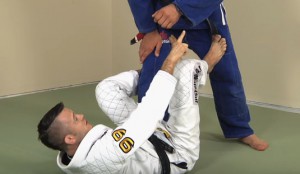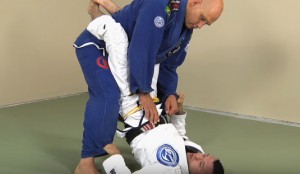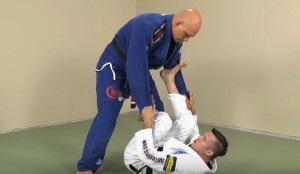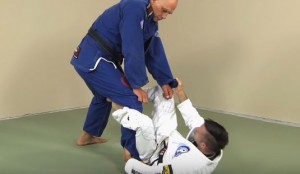What the De La Riva Guard is, is an open guard. Usually it’s utilized when someone is doing standing passes. The reach makes De La Riva ideal for this type of situations. Other option for standing passes that’s equally viable is spider guard, according to Stephan Kesting and Brandon Mullins.
Controlling the ankle or the pants of the leg closer to your hip is one of the basic points of control. Heel is more secure but you need to use your own experience to determine what’s best in a situation.
Foot placement can be different but typically one would wrap around a thigh of the leg we’re holding by the heel and the other would be on the front of the opponents other leg. Ideally you’d also want to latch on to an opponents sleeve.

Stephan Kesting and Brandon ‘Wolverine’ Mullins show how to setup DLR
There are a lot of options for DLR grips, it all depends on your endgame. Some prefer a certain style of sweeping so the grips pictured above work great.
This position is designed to control the majority of the body. Grips determine the attacks available.
One good option for setting up DLR guard is when someone tries to open your closed guard.

Then actively drop the hips and get the feet entangled. The DLR guard requires a bit of knee flexibility.
Another relevant setup is from Spider Guard.

It’s crucial to grab the leg that’s forward (or if they’re square you can choose the one you want), you hook the leg, grab the heel and swing like a pendulum to latch on the foot to the inner side of the leg. Then stretch your opponent utilizing the sleeve grip:

Stephan Kesting and Brandon ‘Wolverine’ Mullins just released an interesting instructional for De La Riva Guard. Check out the whole thing:
If you’ve enjoyed this you might also like:
Ricardo De La Riva explains common mistakes with DLR guard

















